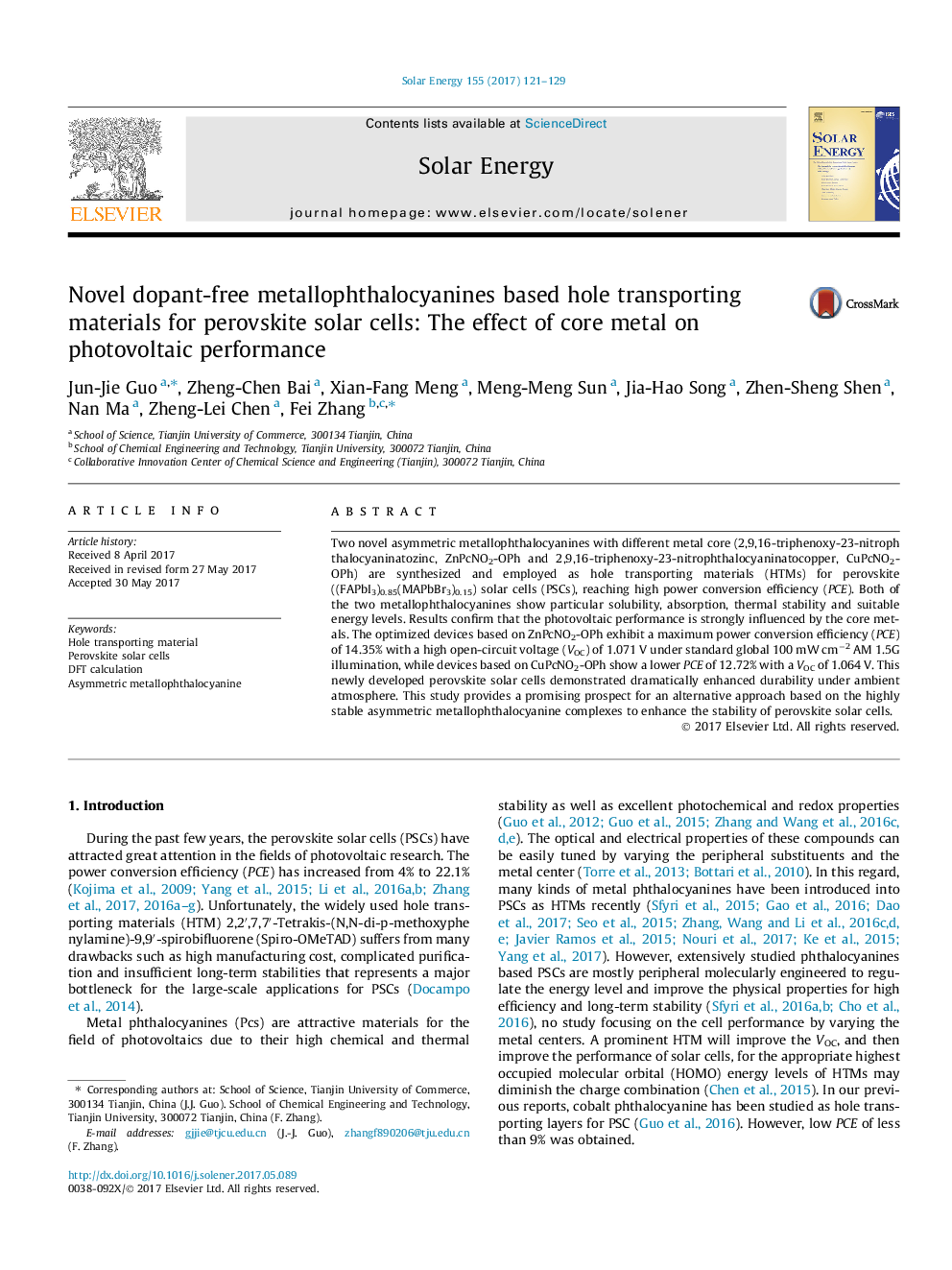| Article ID | Journal | Published Year | Pages | File Type |
|---|---|---|---|---|
| 5450608 | Solar Energy | 2017 | 9 Pages |
Abstract
Two novel asymmetric metallophthalocyanines with different metal core (2,9,16-triphenoxy-23-nitrophthalocyaninatozinc, ZnPcNO2-OPh and 2,9,16-triphenoxy-23-nitrophthalocyaninatocopper, CuPcNO2-OPh) are synthesized and employed as hole transporting materials (HTMs) for perovskite ((FAPbI3)0.85(MAPbBr3)0.15) solar cells (PSCs), reaching high power conversion efficiency (PCE). Both of the two metallophthalocyanines show particular solubility, absorption, thermal stability and suitable energy levels. Results confirm that the photovoltaic performance is strongly influenced by the core metals. The optimized devices based on ZnPcNO2-OPh exhibit a maximum power conversion efficiency (PCE) of 14.35% with a high open-circuit voltage (VOC) of 1.071Â V under standard global 100Â mWÂ cmâ2 AM 1.5G illumination, while devices based on CuPcNO2-OPh show a lower PCE of 12.72% with a VOC of 1.064Â V. This newly developed perovskite solar cells demonstrated dramatically enhanced durability under ambient atmosphere. This study provides a promising prospect for an alternative approach based on the highly stable asymmetric metallophthalocyanine complexes to enhance the stability of perovskite solar cells.
Related Topics
Physical Sciences and Engineering
Energy
Renewable Energy, Sustainability and the Environment
Authors
Jun-Jie Guo, Zheng-Chen Bai, Xian-Fang Meng, Meng-Meng Sun, Jia-Hao Song, Zhen-Sheng Shen, Nan Ma, Zheng-Lei Chen, Fei Zhang,
